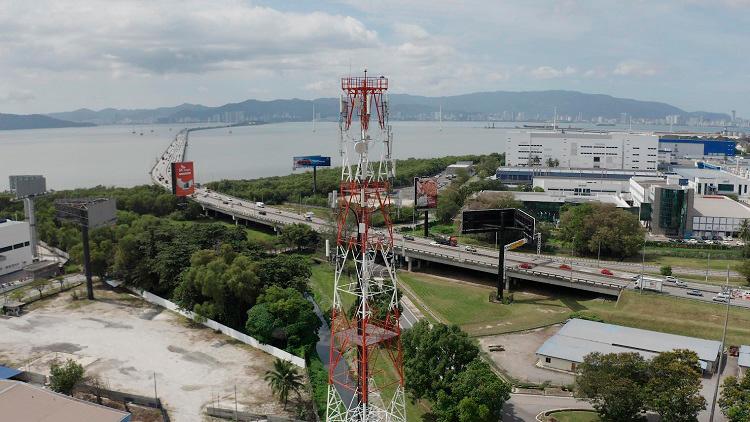U Mobile, Malaysia’s future second 5G network provider, has achieved over 120Mbps seamless 5G network coverage during a trial across the entire 13.5km span of the iconic first Penang Bridge using Huawei’s Meta Active Antenna Unit (MetaAAU) technology.
As one of the world’s longest sea-crossing bridges, it has been challenging for consumers to get consistent coverage due to network engineering hurdles because of its length and fluctuating traffic patterns.
The industry took years to resolve these challenges, which required the installation of a 4G base station in the middle of the bridge to maintain connectivity. However, U Mobile has changed the approach with 5G technology and network engineering.
Previous limitations have now been addressed with the MetaAAU, by using an Extremely Large Antenna Array and beamforming algorithm to double antenna elements, enhance coverage distance and improve user experience by over 30%.
The MetaAAU sites are positioned at each end of the Penang Bridge and effectively eliminates the need for a base station in the middle of the bridge.
Its “0 Bit 0 Watt” mode allows modules to shut down up to a rate as high as 99% during low-traffic periods, which ensures optimal energy efficiency without affecting performance. The mode makes it suitable for locations like the Penang Bridge, where traffic fluctuates between day and night. The system can reactivate within minutes when traffic demand increases, ensuring optimal energy use while maintaining efficient, high-quality performance.
As a result, the trial demonstrated that users experienced network speeds at a minimum of 120Mbps, with an average of 597Mbps and zero dropped calls even at vehicle speeds of 80km/h, significantly outperforming legacy 4G solutions.
Once the 5G network is commercialised and made available to the public, passengers and commuters on the first Penang Bridge can enjoy smooth 4K video viewing, seamless short video switching, immersive game experiences and even HD live broadcasts.









